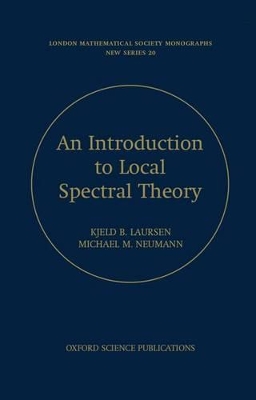London Mathematical Society Monographs
1 primary work
Book 20
Modern local spectral theory is built on the classical spectral theorem, a fundamental result in single-operator theory and Hilbert spaces. This book provides an in-depth introduction to the natural expansion of this fascinating topic of Banach space operator theory, whose pioneers include Dunford, Bishop, Foias, and others. Assuming only modest prerequisites of its readership, it gives complete coverage of the field, including the fundamental recent work by Albrecht
and Eschmeier which provides the full duality theory for Banach space operators. It is highlighted by many characterizations of decomposable operators, and of other related, important classes of operators, as well as an in-depth study of their spectral properties, including identifications of
distinguished parts, and results on permanence properties of spectra with respect to several types of similarity. Also found is a thorough and quite elementary treatment of the modern single- operator duality theory; this theory has many applications, both to general issues of classification and to such celebrated problems as the invariant subspace problems. A long chapter - almost a book in itself - is devoted to the use of local spectral theory in the study of spectral properties of
multipliers and convolution operators. Another one describes its connections to automatic continuity theory. Written in a careful and detailed style, it contains numerous examples, many simplified proofs of classical results, and extensive references. It concludes with a list of interesting open problems,
suitable for continued research.
and Eschmeier which provides the full duality theory for Banach space operators. It is highlighted by many characterizations of decomposable operators, and of other related, important classes of operators, as well as an in-depth study of their spectral properties, including identifications of
distinguished parts, and results on permanence properties of spectra with respect to several types of similarity. Also found is a thorough and quite elementary treatment of the modern single- operator duality theory; this theory has many applications, both to general issues of classification and to such celebrated problems as the invariant subspace problems. A long chapter - almost a book in itself - is devoted to the use of local spectral theory in the study of spectral properties of
multipliers and convolution operators. Another one describes its connections to automatic continuity theory. Written in a careful and detailed style, it contains numerous examples, many simplified proofs of classical results, and extensive references. It concludes with a list of interesting open problems,
suitable for continued research.
